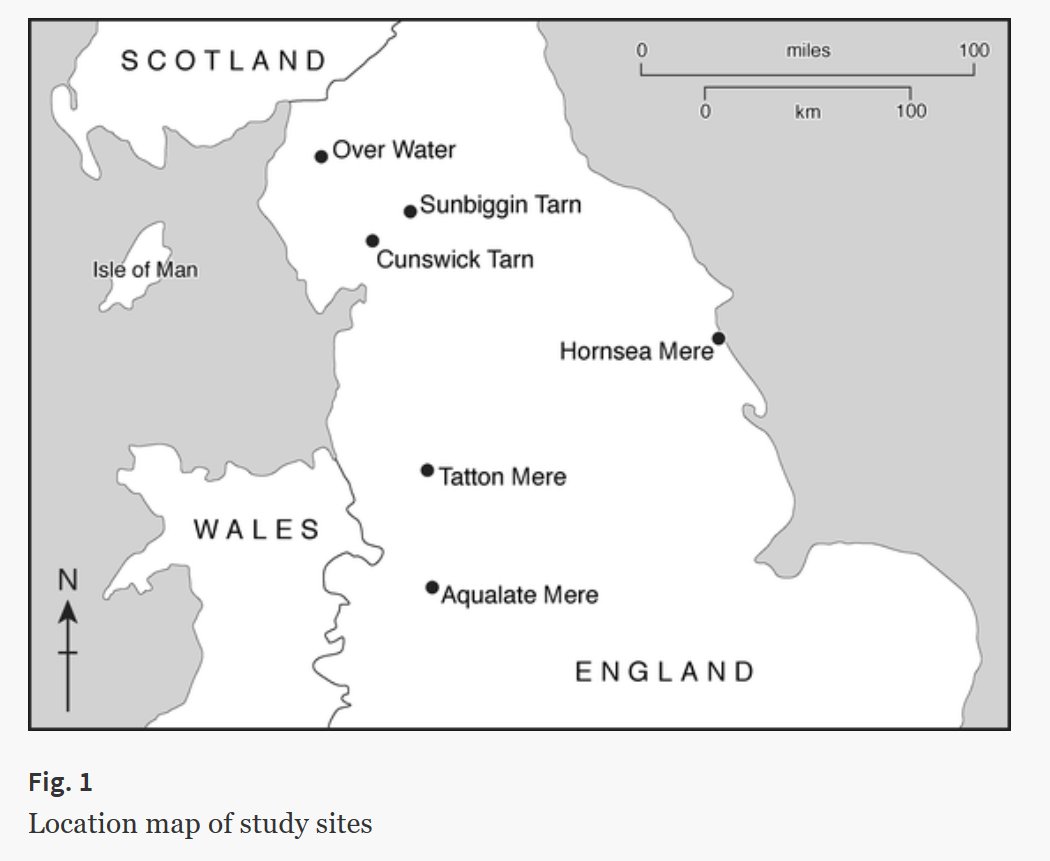Sedimentary macrofossil records reveal ecological change in English lakes: implications for conservation
New publication by Helen Bennion, Carl D. Sayer, Stewart J. Clarke, Thomas A. Davidson, Neil L. Rose, Ben Goldsmith, Ruth Rawcliffe, Amy Burgess, Gina Clarke, Simon Turner, and Emma Wiik

Abstract:
Aquatic macrophytes play a key role in providing habitat, refuge and food for a range of biota in shallow lakes. However, many shallow lakes have experienced declines in macrophyte vegetation in recent decades, principally due to eutrophication. As changes in macrophyte composition and abundance can affect overall ecological structure and function of a lake, an assessment of the timing and nature of such changes is crucial to our understanding of the wider lake ecosystem. In the typical absence of historical plant records, the macro-remains of macrophytes preserved in lake sediments can be used to assess long-term changes in aquatic vegetation. We generated recent (150–200 years) plant macrofossil records for six English lakes subject to conservation protection to define past macrophyte communities, assess trajectories of ecological change and consider the implications of our findings for conservation targets and strategies. The data for all six lakes reveal a diverse submerged macrophyte community, with charophytes as a key component, in the early part of the sedimentary records. The stratigraphies indicate considerable change to the aquatic vegetation over the last two centuries with a general shift towards species more typically associated with eutrophic conditions. A common feature is the decline in abundance of low-growing charophytes and an increase in tall canopy-forming angiosperms such as fine-leaved Potamogeton species, Zannichellia palustris and Callitriche species. We hypothesise, based on findings from long-term datasets and palaeoecological records from enriched shallow lakes where plants are now absent, that the observed shifts provide a warning to managers that the lakes are on a pathway to complete macrophyte loss such that nutrient load reduction is urgently needed. It is the sound understanding of present-day plant ecology that affords such reliable interpretation of the fossil data which, in turn, provide valuable context for current conservation decisions.
